Columbia's offer of color
movie slides based on current b-w magazine advertisements for their
dealers "with hand-lettered imprint on each slide." The
Talking Machine World, September
15, 1920.

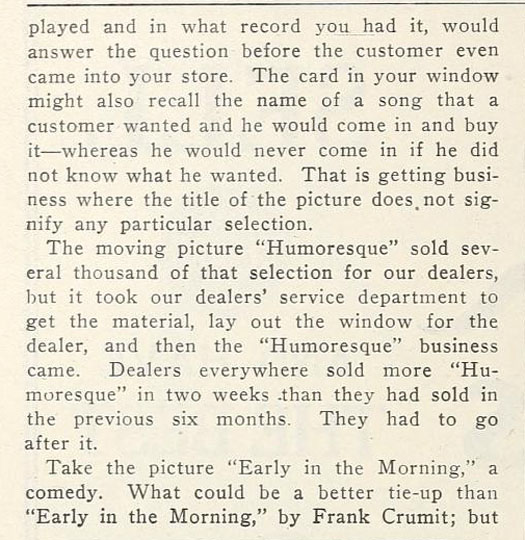

"Many customers
want a record to remember the show. It is through the medium of
the record that they remember the show." The
Talking Machine World, December
15, 1920, pp.150,
152.

"Peggy O'Neil"
Emerson moving picture slide, The
Talking Machine World, May
15, 1921
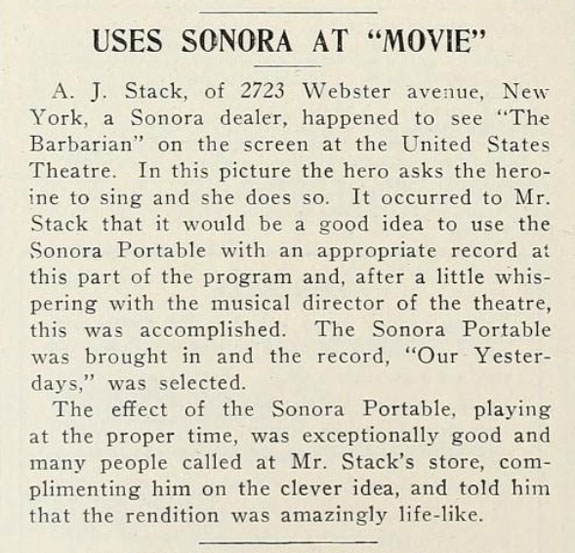
Sonora dealer provided
a Sonora Portable to a theatre to use in the movie "The Barbarian"
to be played "at the proper time", The
Talking Machine World, May
15, 1921

New Columbia Movie
Slides, The Talking Machine
World, May 15, 1922
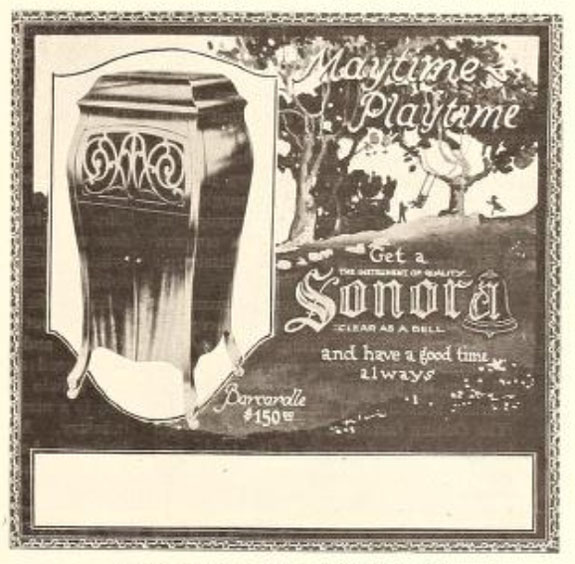
New Sonora Movie Slides,
The Talking Machine World,
April 15, 1923
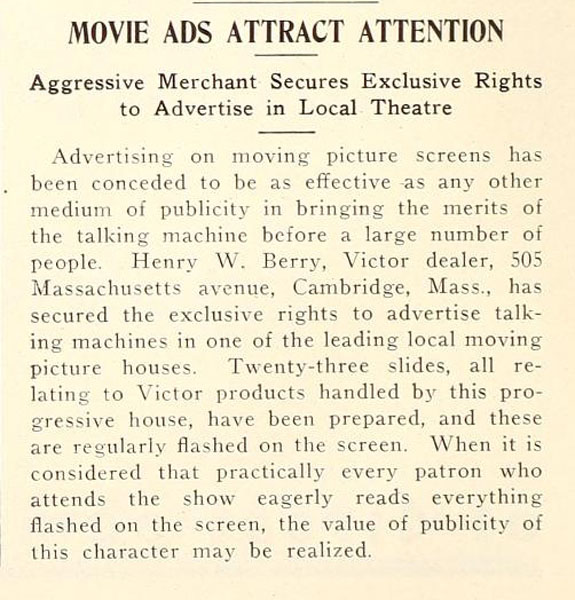
Victor Talking Machine
Co. Movie Slides, The Talking
Machine World, July 15,
1923
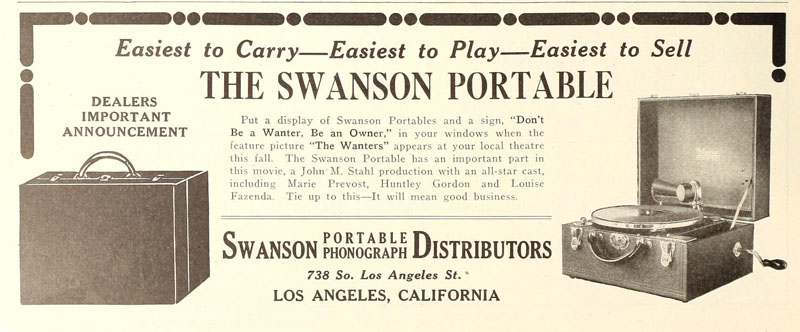
"Put a display of
Swanson Portables and a sign" in your windows for the important
part the Swanson Portable Phonograph plays in the upcoming movie
"The Wanters." The
Talking Machine World, September
15, 1923

New Okeh Movie Slides,
The Talking Machine World,
November 15, 1923


